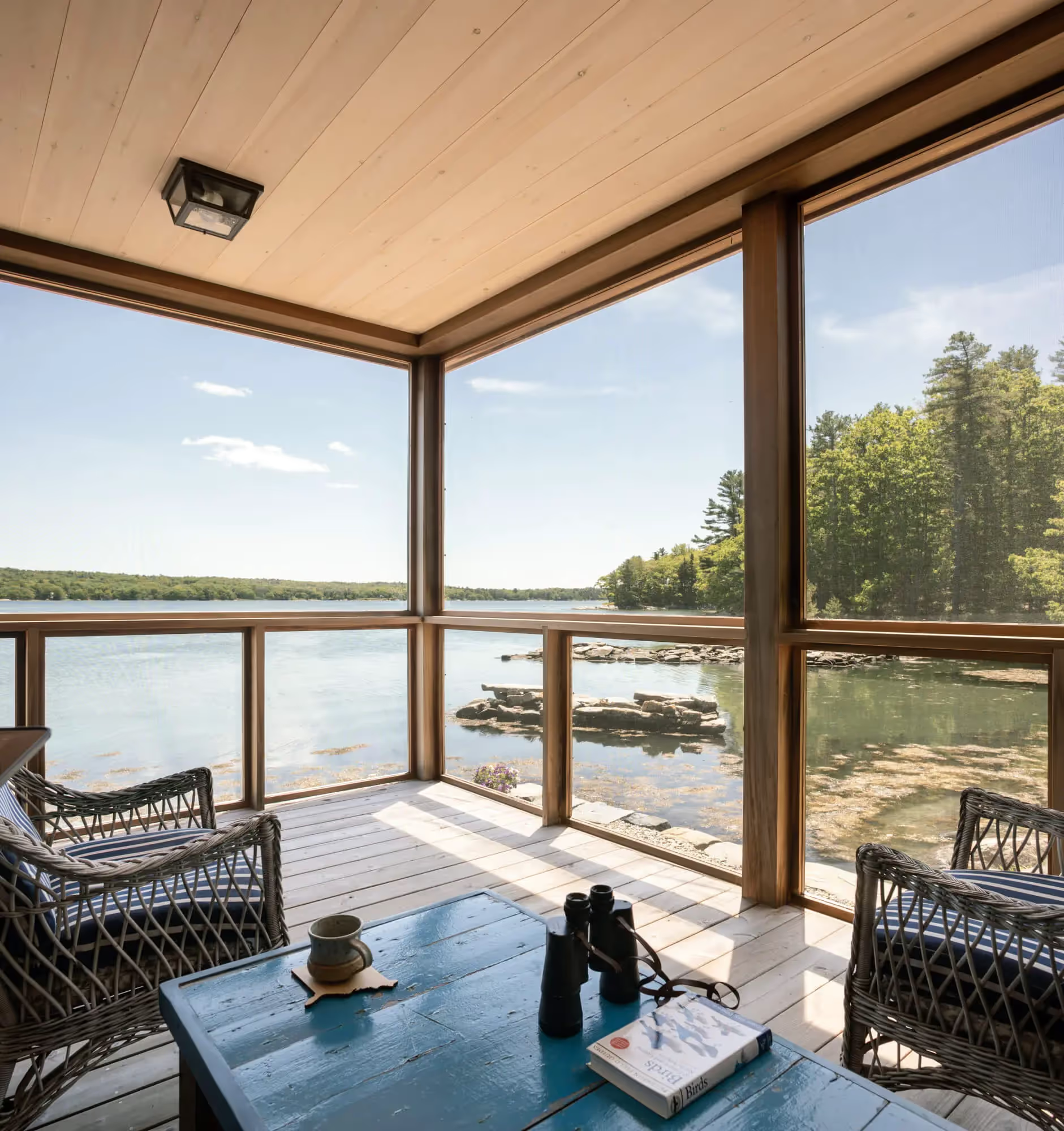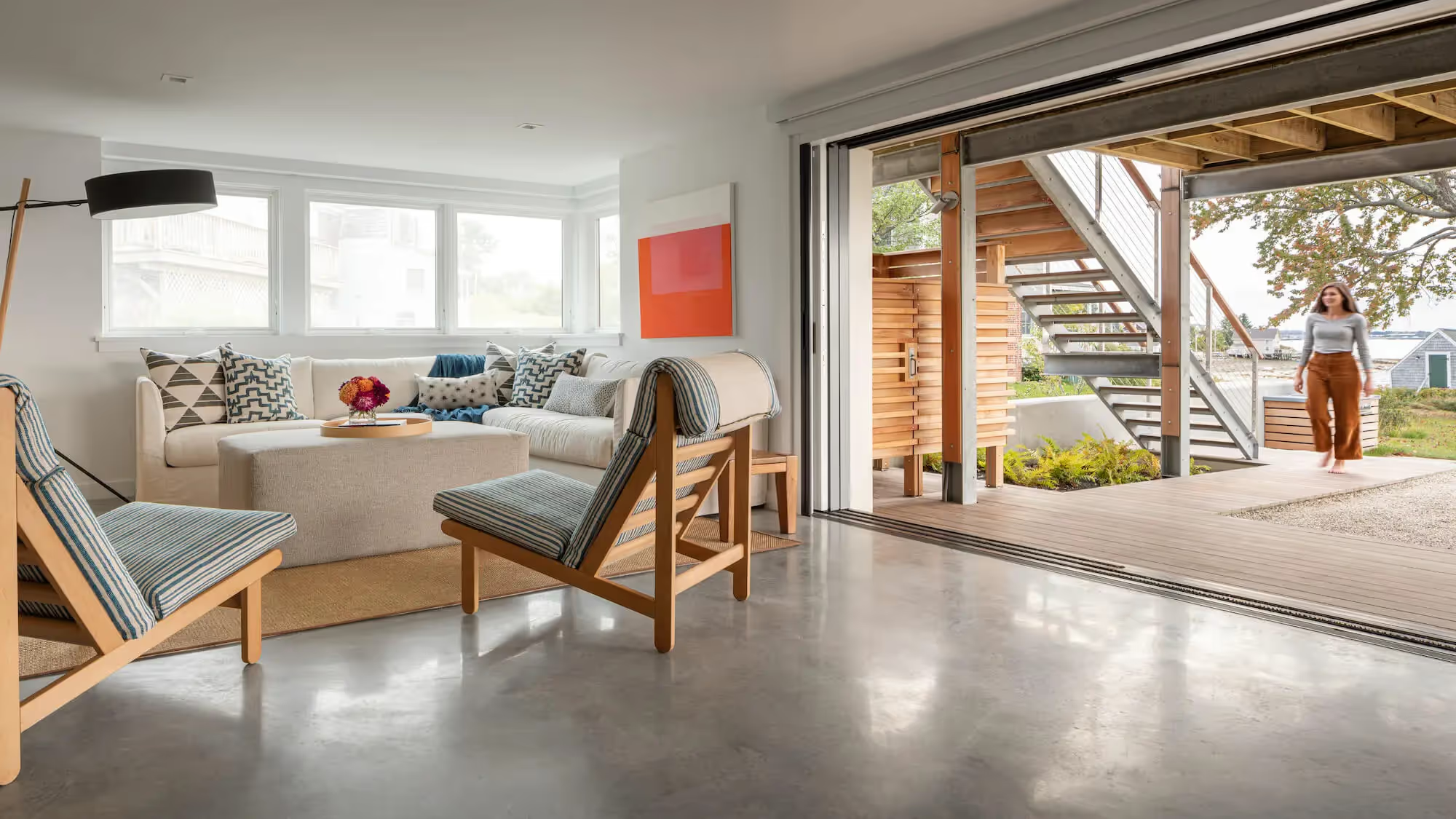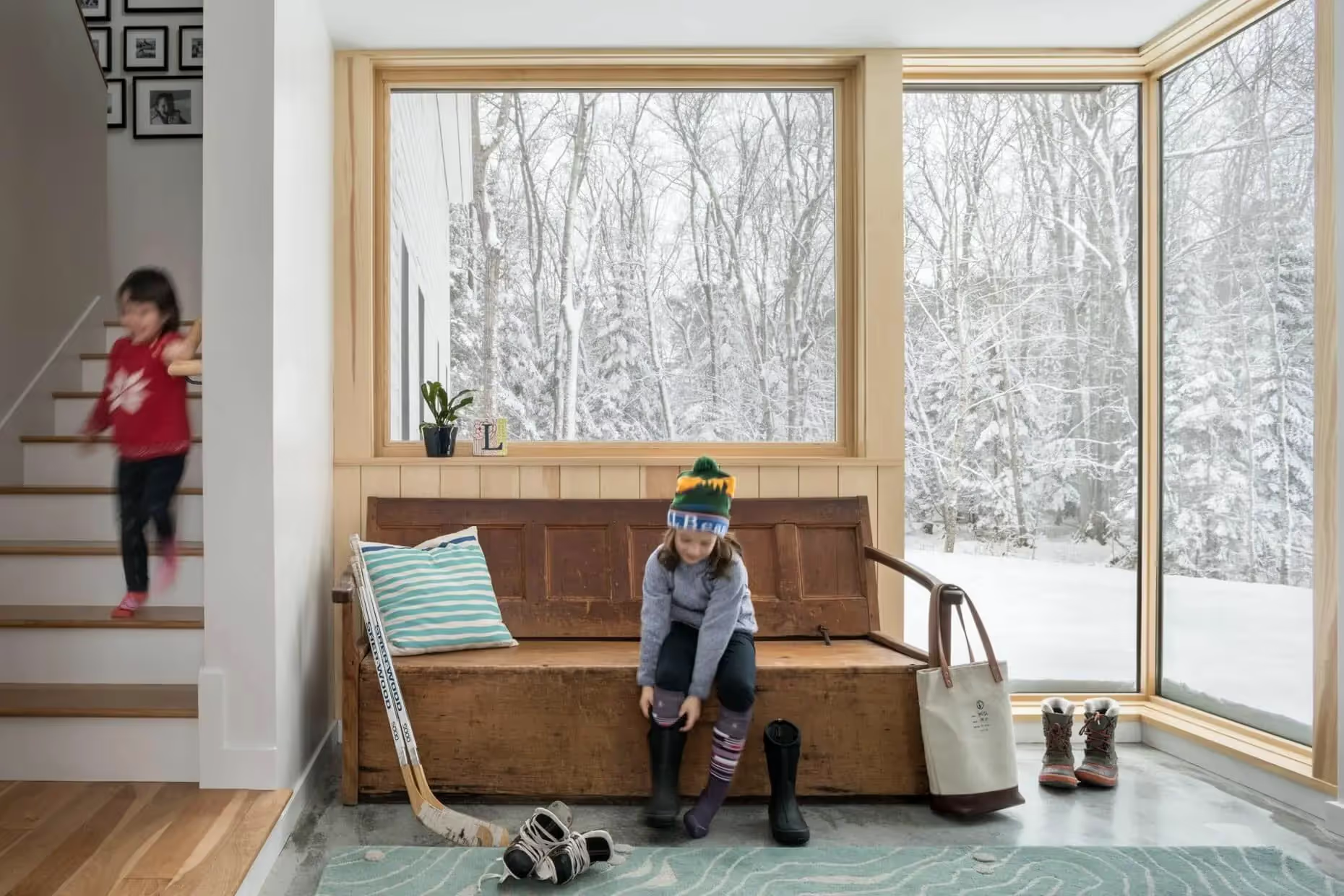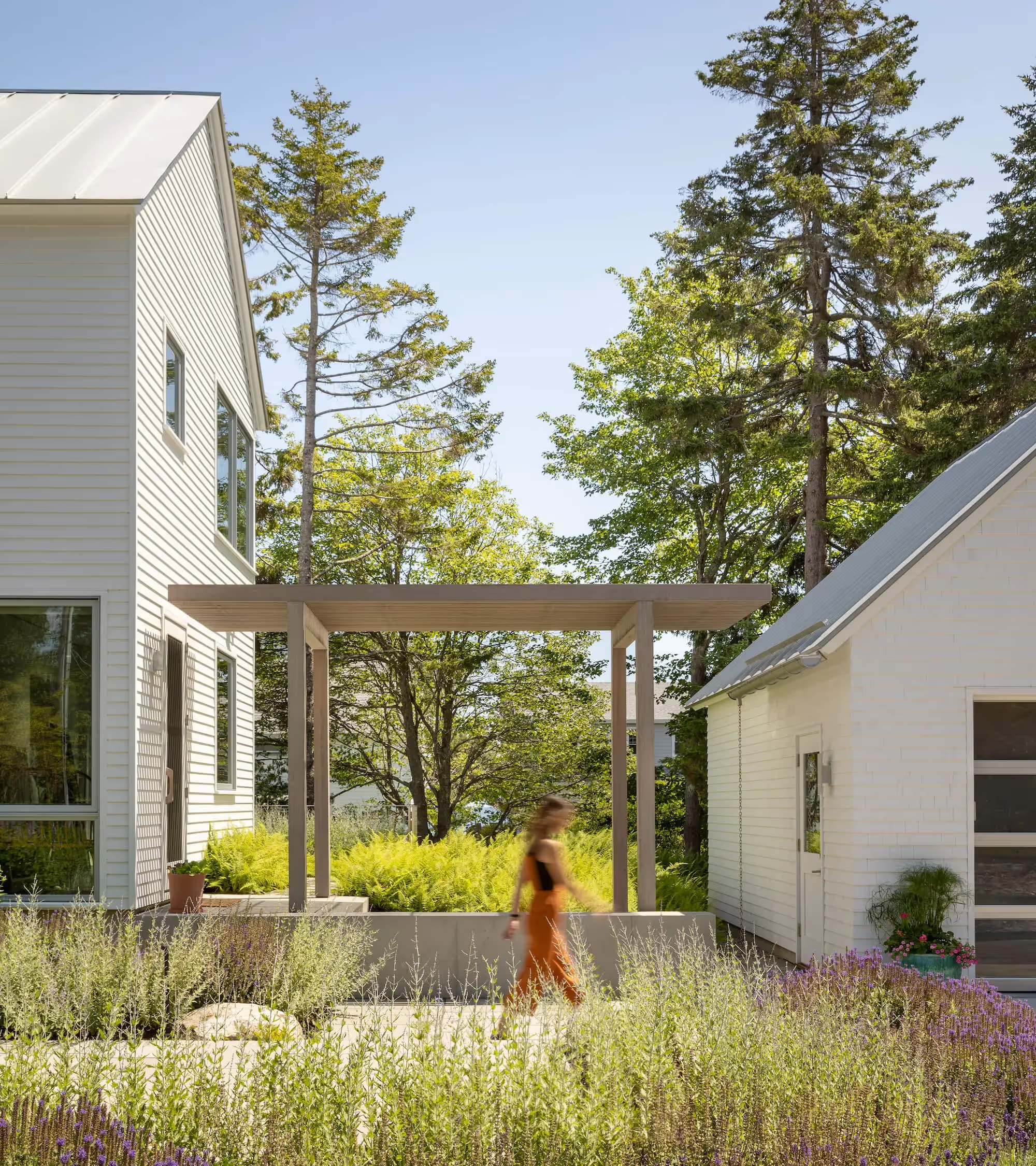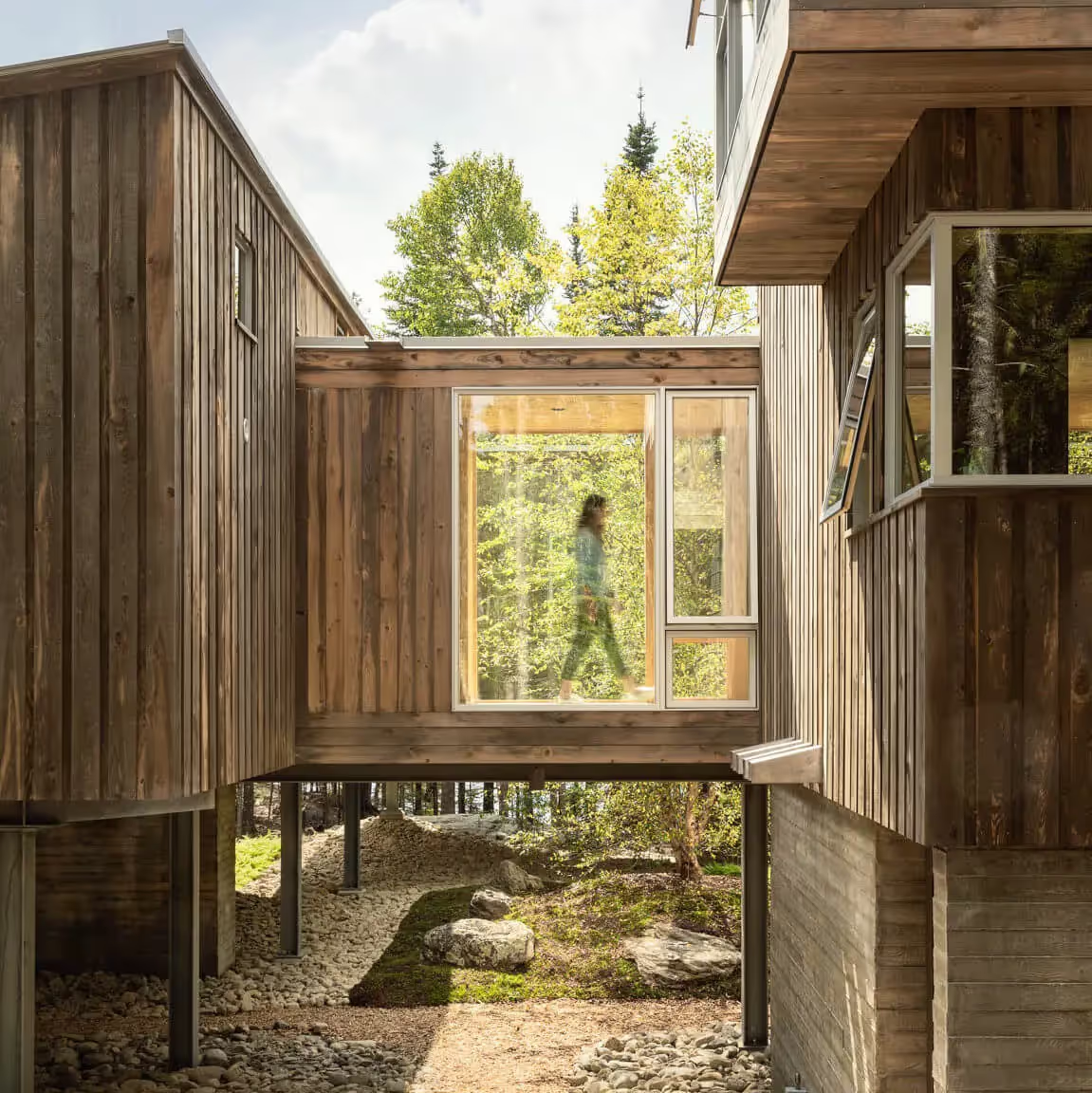Connections Between Inside & Outside
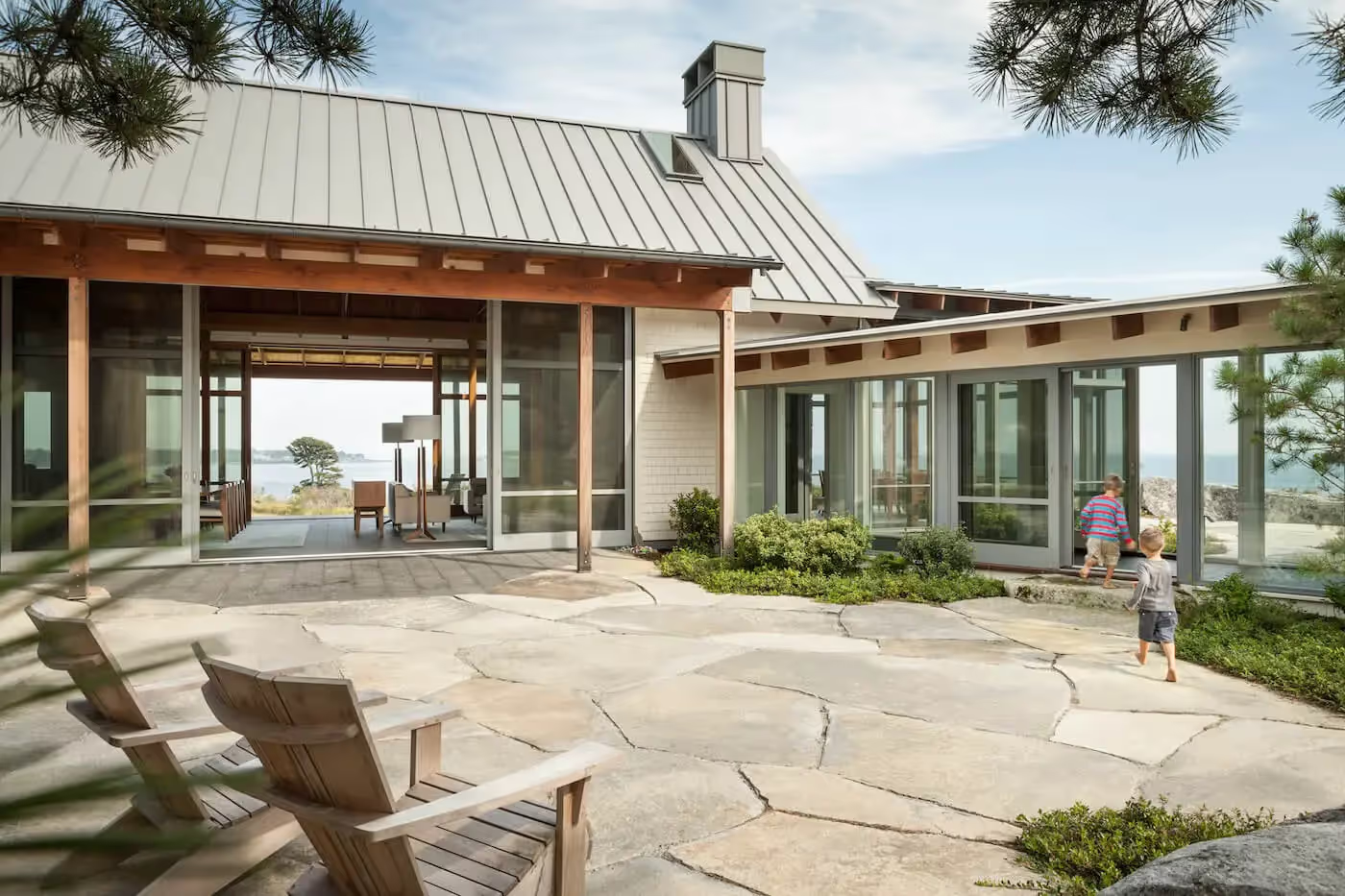

It's summer in Maine, which means long-awaited warm ocean breezes, the cool shade of pines, and crystal-clear lakes. When the outdoors is this inviting, it's hard to stay indoors. As part of our site-specific approach to architecture, we design every home so that it's easy to move between inside and out—no matter the season.
A strong connection between inside and outside allows our clients to live without barriers. With careful planning and spatial arrangement such a connection can create an environment where the outdoors are comfortable to inhabit, while allowing elements of nature—like a cool breeze, natural light, and salty air—into the home. Given the varied nature of Maine's landscape, we believe the ideal inside-outside relationship maximizes the experience of our clients' site and their specific lifestyle.
We know that access to the outdoors mentally and physically benefits our quality of life. Fresh air improves physical health and mental well-being. Natural light supports a healthy sleep cycle. Our design work aims to holistically look at our clients'' lives and create spaces that support them. Designing homes that integrate nature into our clients'' daily lives allows us to offer not only living space, but a way of living.
We are seeing clients wanting to spend more time outdoors, wanting to integrate their home into nature, and wanting to leave a smaller ecological footprint. With the current pandemic, we've recently seen more interest in living in Maine, as well as a growing interest (and expectation) that a home should perform in many different areas. Today our homes support every aspect of life: working, living, dining, and recreation. We aim to create connections with the outdoors, whether our clients are dining on a screened porch, working from a home office, or listening to the sounds of the ocean from their bedroom at night. We aim to do this while also being careful stewards of the land, preserving it, and our clients' investment, for future generations.
We consider the inside-outside relationship with every project we work on, but two projects where this was especially important were our Sortwell Chandlery and Spurwink Retreat projects. Both sit on beautiful coastal sites, but each responds differently to its site. Sortwell Chandlery was an existing structure sitting right on the rugged Maine coast. The project was less about crafting new spaces, and more about carefully removing and adding elements to an existing condition to foster a seamless gradient from inside to outside. It was also about preservation and manipulation. We removed part of the existing volume, inserted a screened porch, and added doors and custom railings to open the interior to the bay. We also inserted a light-well within the square volume and elevated the home to better accommodate the tide.
Spurwink Retreat sits on a secluded field overlooking the ocean. Before we designed the indoor-outdoor living spaces, we designed the formal relationships that allowed us to take full advantage of the site. The home meanders through the landscape, orienting views out towards the sea. In doing so, we created a protected courtyard and garden on the western side of the property. The orientation of the building volumes allowed us to maximize views and give each interior space a sense of privacy and specificity in relation to the land. We then, of course, designed a patio, screened porch, mudroom, and kitchen living area with a sense of transparency and openness to take advantage of the site.
An appropriate connection between inside and outside is very much determined by the site. Some projects sit on secluded, private land. Those projects become about defining outdoor living space within nature while celebrating the particularities of the site, whether it be rugged coastline or dense forest, like in our Englishman Bay Retreat and Bunganuc Woods House projects. Those projects were about carefully inserting a home without overwhelming a site. We also work in towns and neighborhoods, where the indoor-outdoor relationship is about crafting an oasis, keeping in mind the relationship between the home and adjacent homes, like in our Coastal Village Residence and Peaks Island Cottage.
The first step to designing this way is understanding the site and the nature of the land. As we did for Spurwink Retreat, we work with our clients to identify the formal relationships we'd like to create between the interior and exterior, and then develop a site plan to create those relationships. This involves carefully considering the sun path, site winds, and existing topography and landscape. We also encourage including a landscape architect early in the design process. Architecturally, there are a number of ways we create spaces that allow our clients to live, eat, and play comfortably in the outdoors. We use a variety of features like porches, screened porches, decks, patios, full-length windows, operable windows, and window walls.
Because the Maine climate is harsh, we have to use strategies to preserve the longevity of our projects while fostering this indoor-outdoor relationship. Often, we'll put a step down from the home to the landscape. This acts as a threshold between spaces and prohibits accumulated snow or rain from seeping into the home. We also pay special attention to covering windows, particularly windows that span from floor to ceiling. We protect and preserve these openings from Maine's Nor'easters and occasional summer thunderstorms with a porch roof or eave.
A project's material palette also fosters a connection to the outdoors. We often use local wood and natural materials and span them from inside to outside. Finally, we always work to create a sense of transparency within the home, so that visually and physically there is a sense that the home is not separate from the landscape. Whether you are inside or approaching the home from the outside, we always want a connection to nature.
One of the challenges with Maine is creating indoor-outdoor relationships that transition from season to season. During the summer, everyone wants to be outside, but how do you engage the outdoors in the colder months? How do you do that from both an experiential perspective and a technical perspective so you don't suffer heat loss and compromise the comfort of the home? It's a careful balance, and one that we consider with all of our projects. Our Family Farmhouse project is a good example of a home that celebrates the winter and works just as well in the summer.


